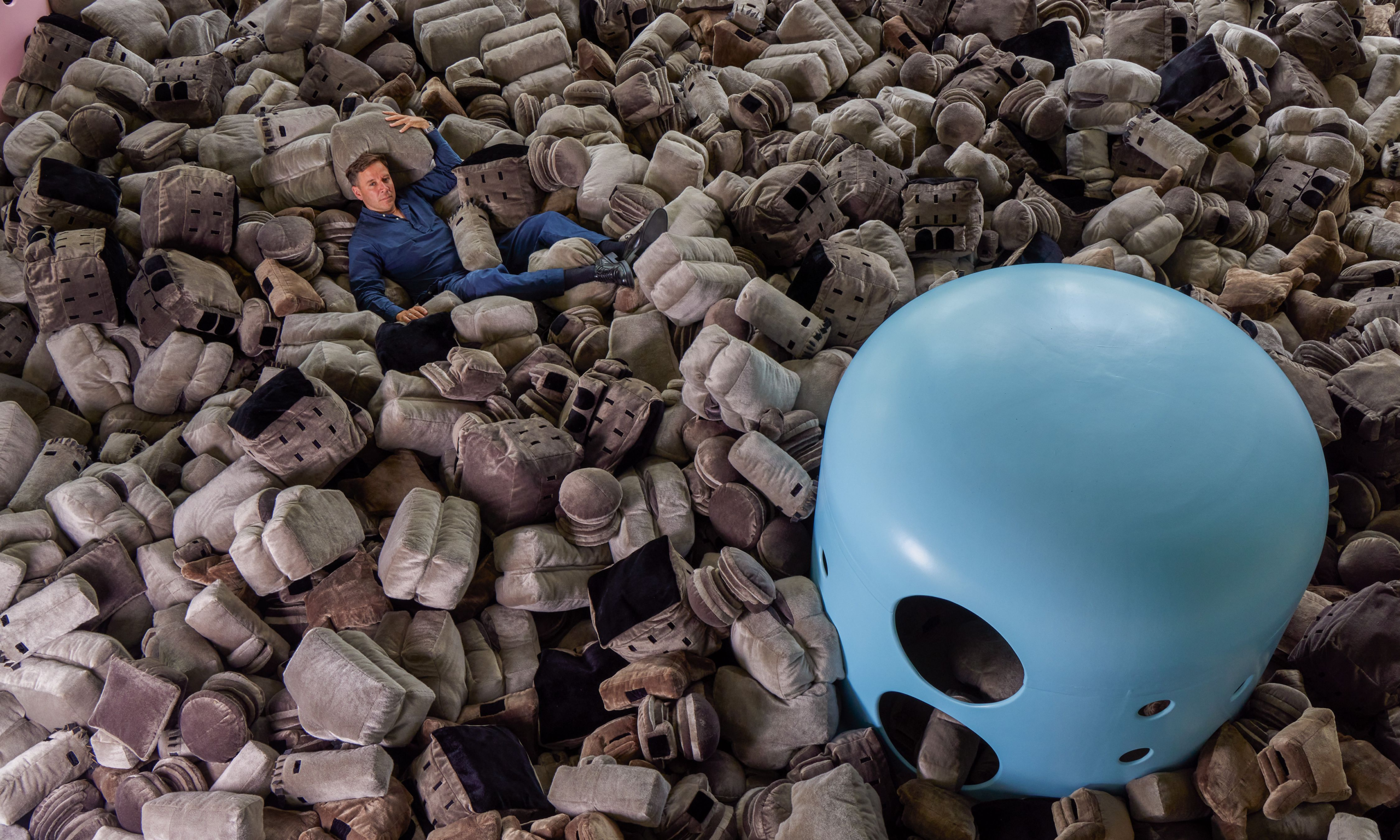Andreas Mühe among his soft toy bunkers © Günter Lepkowski
It was Andreas Mühe’s express wish that Bunker—Realer Raum der Geschichte (Bunker—Real Historical Space) should open on the anniversary of D-Day, just as Europe was marking 80 years since the allies landed on the beaches at Normandy. To him this was “Stunde Null” (zero hour): the beginning of democracy in Europe. He celebrates this date in a playful installation, which also serves as a clear warning.
In the face of global right-wing movements and following recent hype surrounding the building of bunkers for the super rich, it seems appropriate that this show will be staged at Kunsthaus Dahlem, where Adolf Hitler’s favourite sculptor, Arno Breker, once worked. Since the Second World War the building has been reimagined as an exhibition institution for post-war German Modern art. However, its connections to the Third Reich make it a particularly poignant home for Mühe’s first foray into sculpture.
The exhibition follows the trail of “fortress Europe”—a term which, in this context, refers to the wartime bunkers that still litter many European landscapes today. Mühe traced these gigantic, indestructible concrete bodies along the Nazis’ failed coastal defences, known as the “Atlantic wall”. This journey has allowed him to present a show in which you can literally wade through history.
The gallery floor is strewn with multiple copies of 11 soft toy bunker designs, each one hand made by a traditional German toy manufacturer. Mühe counteracts the bunker’s heavyweight, monumental materiality with the soft surfaces of these miniature versions, inviting us to question the metaphorical potential of bunker formations. Once brutal testimonies to imagined human superiority, they now lie in ruins.
By negating the function of bunkers through size and material, Mühe transforms the space into a miniature playground—children find joy among the toy-like imitations. However, looming danger remains, and is symbolised by recasts of playground elements used in the former German Democratic Republic, where the artist spent his childhood. Ostensibly designed for play, the objects also reveal a paramilitary presence.
A group of children playing in a playground in Rostock, 1976 © ddrbildarchiv.de/Klaus Fischer
Born 1979, Mühe comes from a family of artists well-known in former East Berlin. His history is of typically German make, marked by separation, the presence of the Berlin Wall and, after Germany’s reunification, by a promising future and manifold disillusions. As a photographer working with an analogue camera, he became known for his stage-setting portrayals of former the German chancellor Angela Merkel, and for his interpretations of paintings by Caspar David Friedrich.
.
These photographic roots are still represented here, with perceptions of history referenced in five large-format images of bunker bombardment plates that line the edges of the installation, and the mass of bunkers on its floor. Even here Mühe manages to give hope, by bathing his disconcerting imagery in rays of blue.
The exhibition itself also has its origins in photography, with its central motivation drawn from the philosopher and cultural theorist Paul Virilio’s 1979 book Bunker Archeology, photographs from which are also on show. Finally, Mühe’s installation is put into perspective by the support of artists including Barbara Klemm and her deeply moving photograph of a girl athlete, alongside works by Joachim Bandau, Hubert Kiecol and Erasmus Schröter.
• Andreas Mühe. Bunker – Real Historical Space, Kunsthaus Dahlem, until 6 October 2024

